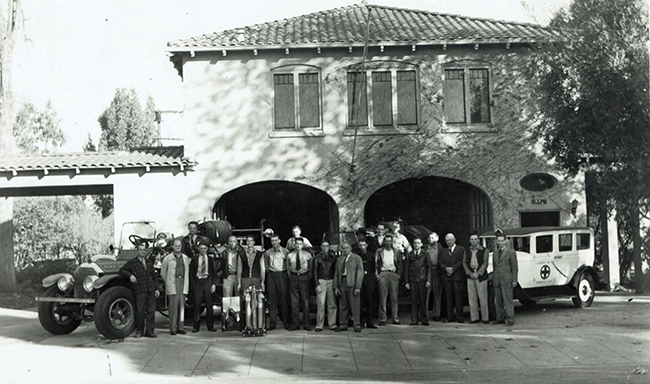City takes next steps for long-term care of urban forest
The sustainability of Claremont’s landscape and urban forest took center stage as the city council moved forward with two important items on the agenda.
The Indian Hill Boulevard median turf project and an updated designated street tree list both received unanimous ap
The Indian Hill Boulevard turf project, which will be completed in two phases, will replace grass in the medians with climate-appropriate plants. The planting plan and palette is informal, organized in drifts and layers, and is expected to have a variety of benefits including lower maintenance, a limited need for chemical fertilizers and pesticides, as well as a reduction of up to 50 percent in water usage.
“The city, through its sustainable city plan, has a goal to reduce water consumption by 30 percent by 2017. Staff has discovered that it will be very hard to achieve this without making substantial physical changes to our landscape and irrigation systems,” explained Principal Planner Chris Veirs. “To this end, staff has been seeking to identify projects that either upgrade antiquated irrigation systems or eliminate unnecessary turf. The Indian Hill median meets both of these criteria.”
Phase one, between Foothill Boulevard and Base Line Road, is expected to be completed in the next couple of months and will retain existing Sycamore trees, which appear to be in good condition. City staff considered creating depressed areas within this section to capture storm water, but determined the 50-year-old trees would be injured and structurally undermined, opting instead to create a series of bioswales near the outer edges of the roadway. A subterranean drip irrigation plan has also been created to provide the watering pattern that the Sycamores have become accustomed to over their lifetime.
Phase two, between Arrow Highway and the 10 Freeway, will be completed by winter and presents the potential for public art displays along the south Indian Hill median. City staff will consider creating one or more pads that could accommodate rotating art installations.
“If you were going to put something in a median, it would make more sense in the southern entry to the city, which is a major entry point,” Mr. Veirs said.
Storm water catchment has not yet been analyzed for phase two, although the possibility will be studied in more detail during the design process.
Staff will solicit bids from qualified contractors to complete the median project and return a request for funding to city council at a later date.
An expanded designated street tree list was also approved by city council and will be utilized during the 2015 Reforestation Program. City arborists will develop a list of appropriate tree species to add to the diversity of Claremont’s urban forest. Homeowners will be notified by letter stating that a city tree will be planted adjacent to their property and requesting that they select a species from the pre-approved list. The Community Services Department has a budget to plant up to 300 trees beginning in March.
“When we plant new trees, we leave the residents with guidelines for basic care, which does include a watering schedule,” Community Services Director Kathleen Trepa said. “To facilitate the process this year, we’ll be providing water bags, which will make it much simpler than having a resident bring out a hose to water a tree.”
Per the city’s municipal code, property owners are required to provide supplemental water to city trees located on their property, including those planted in parkways adjacent to their homes. In July 2014, the city began a pilot program utilizing water bags and will expand the program in 2015 by providing bags to identified property owners.
Ms. Trepa noted that water bags have proved effective for deep watering and have withstood vandals and rodents thus far, making them a cost-effective alternative to hiring an outside agency to perform watering services.
The city retained Inland Urban Forest Group in 2014 to update the designated street tree list. The urban foresters visited each street in Claremont to observe conditions, giving consideration to historical context, aesthetics and neighborhood character. Tree species that have thrived in urban environments with similar climates were added to the list. A comprehensive list of species selected for each street can be found on the city’s website.
A tree workshop will be held at 5 p.m. on Tuesday, January 27 at Claremont City Hall. The workshop is open to the public.
—Angela Bailey
news@claremont-courier.com










0 Comments